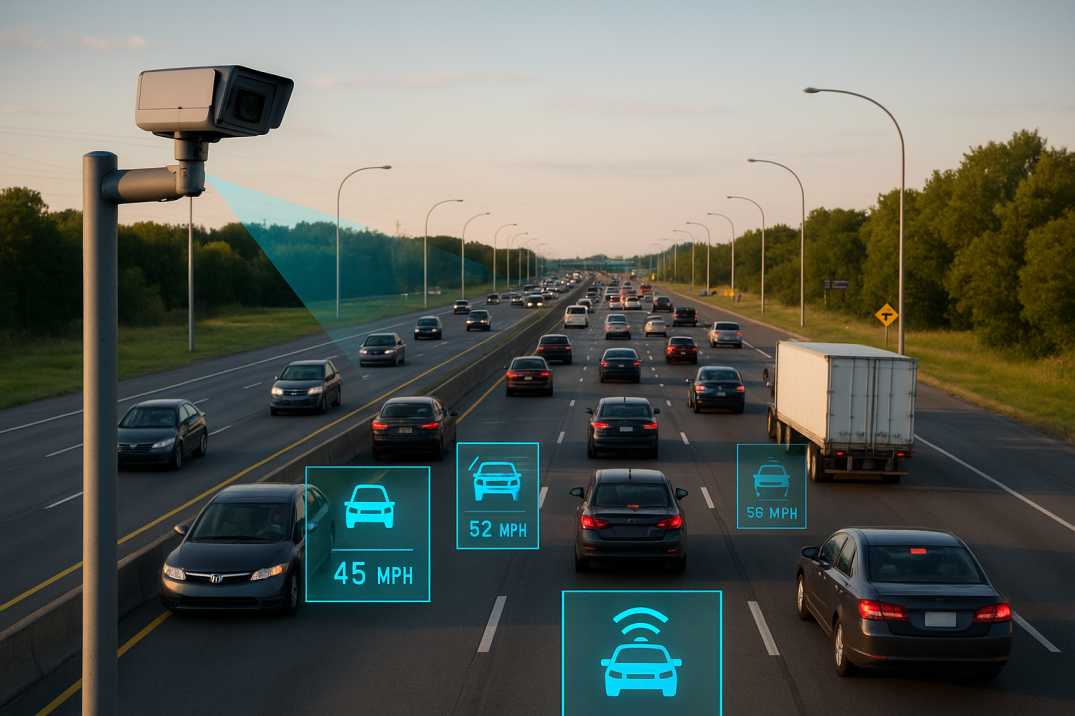Contact Us
RoadVision AI
Private Limited
Office No. 308 & 310, B Block
Ansal Chamber - 1, Bhikaji Cama Place,
Near Engineers India Limited (EIL) Bhawan, New Delhi - 110066
© 2024 | RoadVision AI | All rights reserved
Canada’s road network spans more than 1.3 million kilometers and is the backbone of the nation’s trade, logistics, and daily commuting. Yet, congestion continues to cost billions in lost productivity and fuel consumption. According to Transport Canada, congestion on major highways in urban areas such as Toronto, Vancouver, and Montreal not only increases travel time but also accelerates road deterioration. Addressing these challenges requires modern solutions beyond traditional traffic management methods.
Today, AI-based traffic analysis, digital traffic monitoring systems, and congestion management AI tools are redefining how Canadian authorities can improve efficiency on roads. By combining digital traffic surveys, and road asset management strategies, the country is moving closer to building smart highways in Canada.

Highway congestion in Canada is driven by a combination of rising urban populations, freight movement, and limited roadway expansion. Data from the Canadian Urban Transit Association highlights that traffic congestion in major metropolitan areas adds billions annually in economic loss. Traditional monitoring methods such as manual counts or outdated sensors cannot provide real-time, scalable insights across vast networks.
AI-traffic analysis leverages advanced computer vision and machine learning to detect vehicle flow, classify vehicle types, and predict congestion patterns. Unlike traditional methods, AI can analyze data from roadside cameras, sensors, and even drones to provide real-time updates.
For instance, AI can identify peak congestion zones and suggest rerouting strategies, significantly reducing travel times. These systems are also more accurate than manual reporting, allowing Canadian authorities to prioritize improvements efficiently.
Digital traffic monitoring is transforming how transportation departments oversee roads. These systems track lane occupancy, vehicle speeds, and flow rates continuously. By integrating AI with these monitoring systems, authorities gain predictive capabilities, ensuring proactive rather than reactive traffic management.
This also supports better road inventory inspections, as traffic flow data can be combined with asset health records. This integration ensures that maintenance planning is based on real usage rather than estimates, improving road asset management in Canada.
AI-based Congestion management goes beyond monitoring by actively recommending solutions. It can synchronize traffic lights, optimize toll collections, and propose dynamic lane management strategies. In Canada’s urban centers, where highways intersect with commuter rail and transit systems, AI can also help coordinate multimodal transportation planning.
Conducting a digital traffic survey is no longer just about vehicle counts. With AI traffic survey tools, Canadian authorities can capture detailed insights such as speed variations, traffic density, and lane-level usage patterns. This data feeds into pavement condition surveys and road safety audits, ensuring highways are maintained in line with traffic loads and safety standards.
The vision of smart highways in Canada includes connected infrastructure, automated monitoring, and AI-driven traffic control. By integrating digital traffic monitoring systems with road asset management strategies, highways can become safer, more efficient, and more sustainable.
This also enables predictive maintenance. With case studies from global projects, Canadian agencies can see how AI prevents bottlenecks by aligning road repair schedules with real-time traffic data.
Canada’s highways are the arteries of its economy, but congestion remains a growing challenge. The adoption of AI-based traffic analysis, digital traffic monitoring systems, and traffic survey tools offers a transformative path forward. By enabling smarter planning, predictive insights, and real-time monitoring, Canada can achieve a future of efficient and reliable road asset management.
RoadVision AI is transforming infrastructure development and maintenance by harnessing AI in roads to enhance safety and streamline road management. Using advanced roads AI technology, the platform enables early detection of potholes, cracks, and surface defects through precise pavement surveys, ensuring timely maintenance and optimal road conditions. Committed to building smarter, safer, and more sustainable roads, RoadVision AI aligns with both IRC Codes and Canadian road engineering standards, empowering engineers and stakeholders with data-driven insights that cut costs, reduce risks, and enhance the overall transportation experience.
If your organization is looking to explore advanced AI-based congestion management or traffic monitoring, book a demo with RoadVision AI today.
Q1: What causes most highway congestion in Canada?
Highway congestion is mainly caused by rising vehicle volumes, freight movement, bottlenecks in urban corridors, and limited expansion capacity.
Q2: How does AI help in congestion management?
AI helps by analyzing real-time traffic data, predicting congestion patterns, and optimizing traffic flow using digital monitoring systems.
Q3: What are AI traffic survey tools?
These are advanced digital tools that use cameras, sensors, and machine learning to provide accurate traffic data for planning and maintenance.